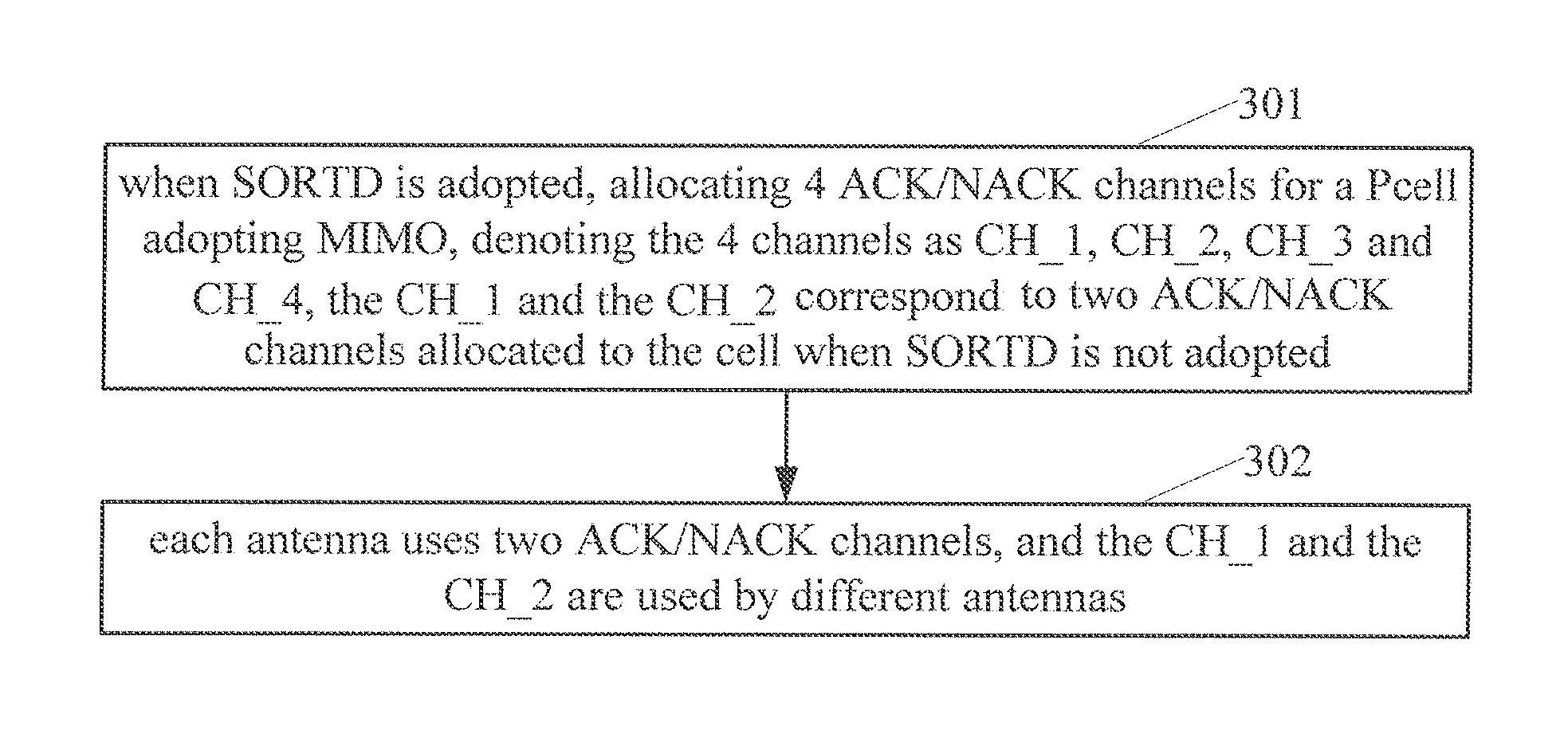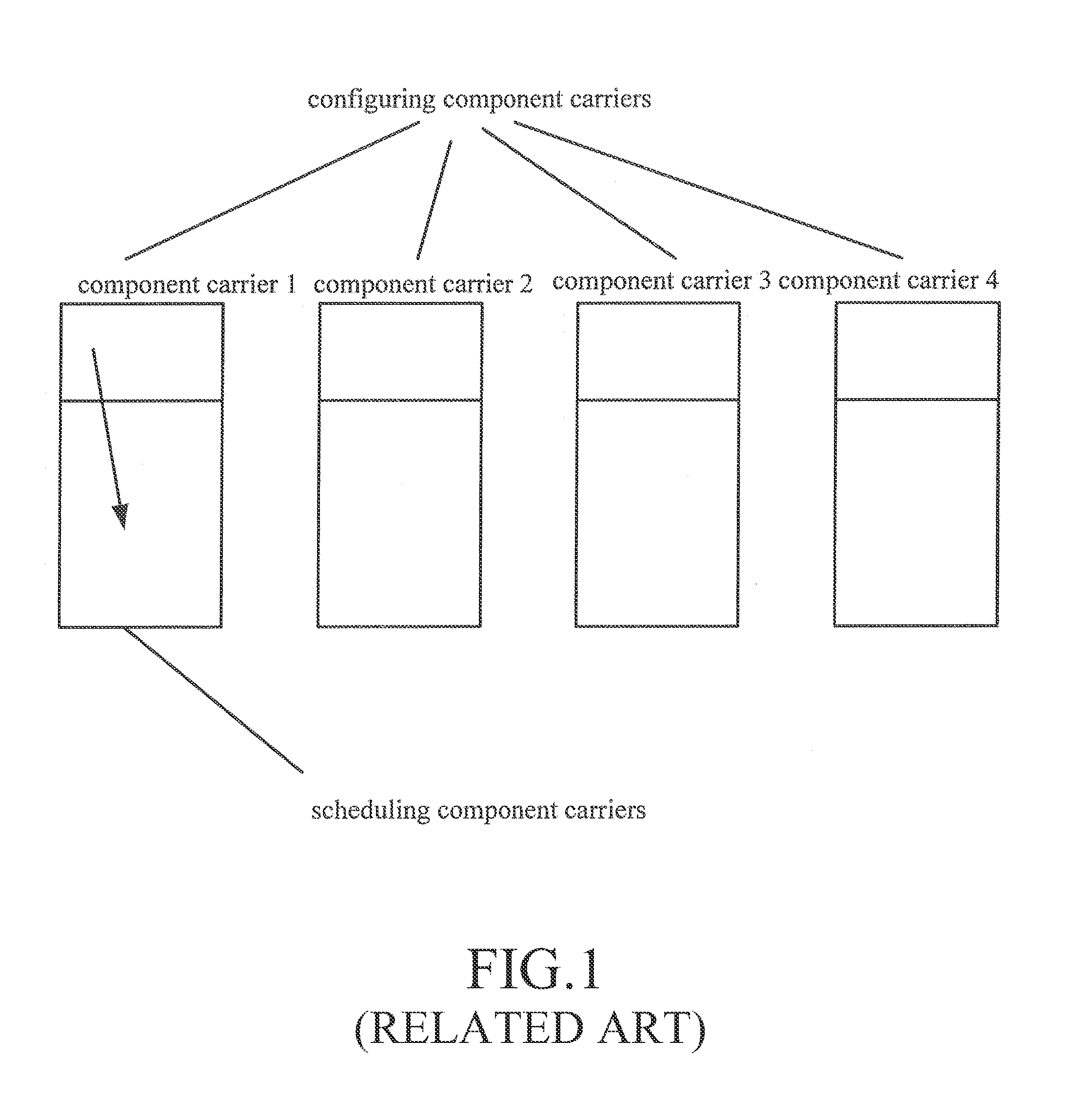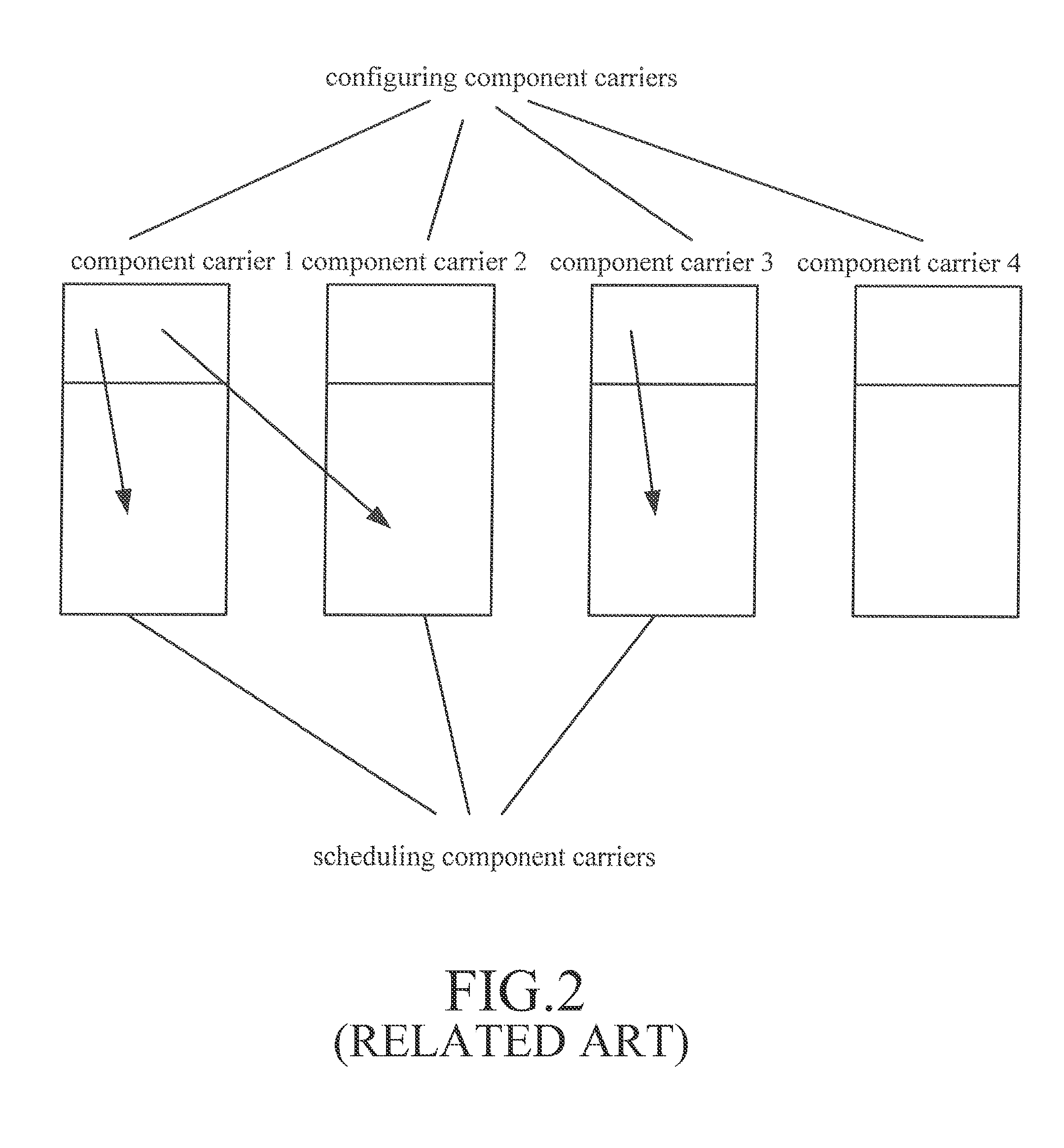Method and an apparatus for allocating an ack/nack channel
a technology of acknowledgement/negative acknowledgement and channel, applied in the field of wireless communication systems, can solve the problems of not meeting the requirements of higher data transmission rate, no detailed solution in fdd system and td system
- Summary
- Abstract
- Description
- Claims
- Application Information
AI Technical Summary
Benefits of technology
Problems solved by technology
Method used
Image
Examples
exemplary embodiment 1
[0043]This exemplary embodiment describes a method for allocating ACK / NACK channels for ACK / NACK information of a Pcell. State confusion should be avoided within an indefinite period of time for switching between a single Cell mode and a channel selection mode when a BS schedules data only on a Pcell.
[0044]When the Pcell is configured with a non-MIMO transmission mode, only one piece of ACK / NACK information for one Transmission Block (TB) should be fed back for a Pcell. When SORTD is supported, two ACK / NACK channels should be allocated for the one piece of ACK / NACK information. The two ACK / NACK channels may be obtained by scheduling PDCCH of data transmission in the Pcell. For example, assuming that the smallest Control Channel Element (CCE) index of PDCCH is denoted by n, the two ACK / NACK channels may be obtained by mapping the CCE index n and n+1. The two ACK / NACK channels are respectively used by two transmitting antennas. Denoting the two ACK / NACK channels as CH_1 and CH_2, and ...
exemplary embodiment 2
[0056]This exemplary embodiment describes a method for allocating ACK / NACK channels for ACK / NACK information for an Scell.
[0057]When an Scell is configured with a non-MIMO transmission mode, one piece of ACK / NACK information for a TB should be fed back, and two ACK / NACK channels should be allocated. When cross carrier scheduling is not adopted, or the cross carrier scheduling is realized by using a PDCCH of another Scell, the two ACK / NACK channels may be semi-statically configured by a high layer, or, multiple ACK / NACK channels semi-statically configured by the high layer and the two ACK / NACK channels are dynamically specified by ARI information in the PDCCH. When cross carrier scheduling from PDCCH of the Pcell is performed, an implicit method may be adopted to specify the two ACK / NACK channels for ACK / NACK information of the Scell by a PDCCH. For example, denoting the smallest CCE index of the PDCCH as n, the two ACK / NACK channels may be obtained by mapping the CCE index n and n+1...
PUM
 Login to View More
Login to View More Abstract
Description
Claims
Application Information
 Login to View More
Login to View More - R&D
- Intellectual Property
- Life Sciences
- Materials
- Tech Scout
- Unparalleled Data Quality
- Higher Quality Content
- 60% Fewer Hallucinations
Browse by: Latest US Patents, China's latest patents, Technical Efficacy Thesaurus, Application Domain, Technology Topic, Popular Technical Reports.
© 2025 PatSnap. All rights reserved.Legal|Privacy policy|Modern Slavery Act Transparency Statement|Sitemap|About US| Contact US: help@patsnap.com



